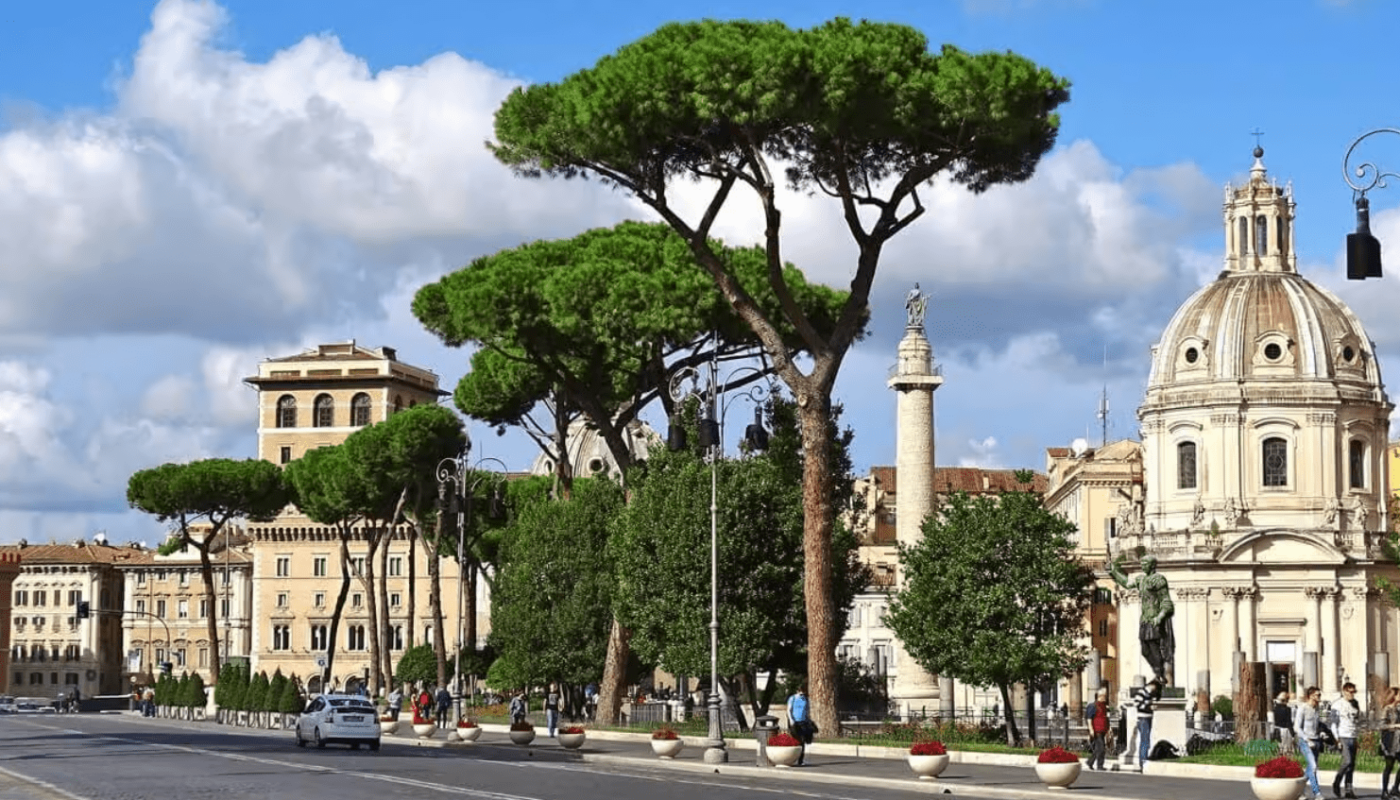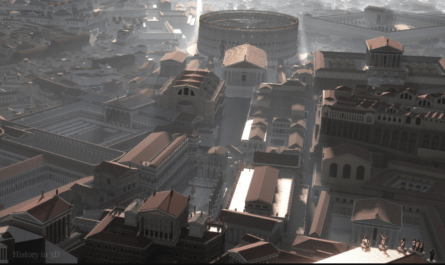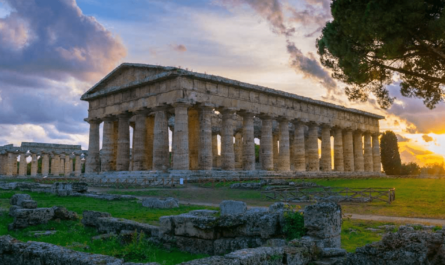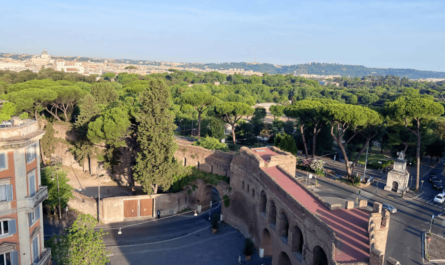Rome in Spring is the peak tourist season, and it’s easy to see why. The city comes alive during this time, thanks to the delightful weather and extended daylight hours. With pleasant temperatures and blooming flowers, spring is an ideal season for exploring Rome’s historical and cultural treasures.
Given the popularity of this season, meticulous planning is crucial to avoid the frustration of long queues and fully booked accommodations. Our comprehensive guide is designed to help you navigate Rome in spring, ensuring you make the most of your visit despite the bustling crowds, particularly in the city’s historic center.
Weather in Spring in Rome
Spring in Rome spans from late March through June, offering a range of weather conditions. Although the season officially begins in March, we’ll focus on the weather from the end of March through June for a more accurate picture.
March generally features unstable weather with cooler temperatures and occasional showers. For more detailed insights on what to expect in March, including essential tips, refer to our in-depth guide on visiting Rome in March.
April sees average temperatures ranging from 19°C (66°F) during the day to 9°C (48°F) at night. Rainfall is relatively minimal, with occasional showers spread over a week or so, though April is more likely to be sunny than wet. This transitional month bridges the chill of March and the warmth of May, making it ideal for long walks without the intense summer heat. For further details on visiting Rome in April, consult our dedicated guide.
May brings warmer temperatures, with daytime highs reaching 24°C (75°F) and nighttime lows around 13°C (55°F). Rainfall decreases further compared to April, averaging about five days of rain. The weather starts to feel more like summer, contributing to the increased tourist activity. For tips on experiencing Rome in May, check out our guide on the subject.
June marks the onset of summer heat, with temperatures ranging from 17°C (63°F) to 28°C (82°F). During the hottest part of the day, the heat can be intense, so light clothing is essential. Rainfall is rare, with about three days of rain on average. Early visits are recommended to avoid the peak heat.
Is Rome Better in Spring or Fall?
Both spring and fall in Rome offer pleasant temperatures, making either season a good choice for exploring the city. Spring is characterized by vibrant blossoms and longer days, while fall offers a more romantic atmosphere with golden hues and falling leaves.
Fall tends to bring more rain, particularly in November and December, and the tourist crowds are generally lower compared to spring. While December sees increased traffic around Christmas, October and November offer a quieter experience. Spring, especially Easter, is a popular time for tourists, signaling the start of the high season.
Is Spring a Good Time to Visit Rome?
Spring is an excellent time to visit Rome. The weather is pleasantly warm, ideal for outdoor activities, yet not excessively hot. Spring temperatures are perfect for strolling the city, dining al fresco, or enjoying a picnic in one of Rome’s many parks.
However, the downside is the large number of tourists flocking to every landmark, making it challenging to avoid long lines. Strategic planning and some clever tricks can enhance your experience and help you navigate the crowds more effectively.
Pros and Cons of Visiting Rome in Spring
Pros:
- Festivals: Spring in Rome is vibrant with local festivals, from Easter celebrations to the birthday of Rome and the May Day concert. The season is packed with events that offer unique cultural experiences.
- Weather: The pleasant spring weather is a major draw, with mild temperatures and plenty of sunshine making outdoor exploration enjoyable.
- Photography: The extended daylight hours and blooming flowers provide fantastic opportunities for photography, capturing the city’s beauty in full color.
- Light and Colors: Spring’s bright, crisp light enhances the beauty of Rome’s landmarks, churches, and palaces, creating a picturesque setting for sightseeing.
Cons:
- Crowds: Spring is a busy season for tourists, leading to long lines at major attractions. Planning ahead and finding ways to bypass the crowds can improve your visit.
- Higher Costs: As the peak tourist season, spring sees higher prices for accommodation and flights, especially from April through June.
Important Dates in Rome in Spring
- April 9th – Easter: Celebrated with various religious events, including Palm Sunday and the Via Crucis. Offices close on Easter Sunday and Monday, while restaurants remain open. Shops in tourist areas are open, but city center shops may be closed.
- April 21st – The Birthday of Rome: Known as “Natale di Roma,” this celebration includes historical reenactments and free museum access. Schools and offices remain open.
- April 25th – Liberation Day: A public holiday with closed offices and schools. Museums and landmarks in the city center remain open, though public transport may operate on a holiday schedule.
- May 1st – Labour Day: Another public holiday featuring the annual concert in Piazza San Giovanni. Museums and landmarks stay open, but many locals participate in the festivities.
- May 28th – Pentecost: A significant religious anniversary, celebrated with special events and ceremonies, including the falling of rose petals from the Pantheon.
What to Do in Rome in Spring
Attend Easter Celebrations: Experience local Easter traditions, from the Mass in Saint Peter’s Square to the Via Crucis in the Colosseum. Visit key sites like the Vatican Museums and Saint Peter’s Basilica.
See the Birthday of Rome: Celebrate “Natale di Roma” with historical reenactments and free museum access around Aventine Hill, the Circus Maximus, and the Centro Storico.
Go to the Pantheon: A must-visit year-round, but especially notable during Pentecost when rose petals fall through the Pantheon’s oculus. If you’re not in Rome for Pentecost, the Pantheon remains a significant site to explore.
Visit the Colosseum: Essential for first-time visitors, the Colosseum offers insight into ancient Roman architecture and history. Tickets include access to the Roman Forum and Palatine Hill. Visit early in the day to avoid the heat.
Walk Around the City Center: Rome’s Centro Storico is a treasure trove of history, art, and architecture. Enjoy free exploration of its palaces, churches, and fountains, especially in the pleasant spring weather.
Visit the Baths of Caracalla: Explore this ancient spa complex, less crowded than the Colosseum, and discover its historic features including the Mithra temple and the library.
Go to the Park: Rome’s large urban parks, such as Villa Borghese and Villa Pamphilj, offer green spaces for relaxation and picnics. Enjoy the city’s greenery and historical gardens.
Eat Out: Spring weather is perfect for al fresco dining. Explore outdoor seating at restaurants throughout the city, from central locations to offbeat neighborhoods like Testaccio and Nomentano.
Explore Offbeat Locations: Escape the crowds by visiting lesser-known sites in neighborhoods like Nomentano/Trieste. Discover attractions such as Sant’Agnese Fuori le Mura and Villa Torlonia.
Take a Day Trip: Spring is ideal for exploring nearby towns and natural sites. Visit destinations like Viterbo, Bracciano, Tivoli, and Ostia Antica for enriching day trips.
Visit the Beach: From May onward, take a break from the city and relax at nearby beaches like Ostia Lido and Santa Marinella. Enjoy sunbathing, swimming, and dining by the sea.
Tips to Survive in Rome in Spring
- Book in Advance: Secure your accommodations and popular attraction tickets early to avoid last-minute issues.
- Join a Tour: Opt for private tours to skip the lines and gain insights from local experts. This is particularly useful for high-traffic sites like the Colosseum and Vatican.
- Book Tickets Online: Purchase tickets in advance for attractions to bypass long queues. Fast-track options are available for popular sites.
- Start Early: Arrive early to enjoy popular landmarks with fewer crowds. For the best photos, visit iconic sites at sunrise.
What to Eat in Rome in Spring
- Artichokes: A seasonal favorite, try them Roman style “alla romana” or Kosher style “alla giudìa.”
- Puntarelle: A crisp, marinated salad made with this seasonal green.
- Vignarola Pasta: A springtime dish featuring fresh fava beans and peas.
- Abbacchio con Patate: Baked lamb with potatoes.
- Abbacchio a Scottadito: Grilled lamb ribs.
- Gelato: Enjoy artisan gelato made with seasonal fruits as the weather warms up.
What to Pack for Rome in Spring
- Travel Documents: Essential ID, passport, and any necessary visas.
- Sunscreen: Protect your skin from the spring sun.
- Backpack: Useful for day trips and carrying essentials.
- Crossbody Bag: Convenient for city exploration and avoiding pickpockets.
- Swimwear: For a beach visit or hotel pool.
- Sunglasses: Essential for sunny days.
- Reusable Travel Bottle: Stay hydrated with Rome’s tap water from nasoni fountains.
- Safety Clothes: Keep valuables secure and avoid pickpocketing.
What to Wear in Spring in Rome
- Walking Shoes/Sandals: Comfortable for extensive sightseeing and walking.
- T-Shirts: Ideal for warmer days in late spring.
- Long-Sleeve Tops: Useful for cooler mornings and evenings.
- Shorts: Comfortable for warmer weather, especially in late spring.
- Cotton/Linen Trousers: Light and suitable for both warm days and religious site visits.
- Skirts/Dresses: Convenient for visiting churches and other sites with dress codes.
- Spring Jackets: Light outerwear for cooler or breezy days.
- Shawl: Handy for windy days or strong air conditioning in indoor venues.
By keeping these tips and recommendations in mind, you can ensure a memorable and enjoyable spring visit to Rome. With careful planning and a bit of preparation, you’ll experience the best of the Eternal City during this vibrant season.



